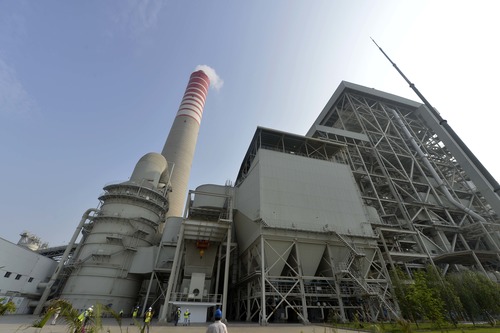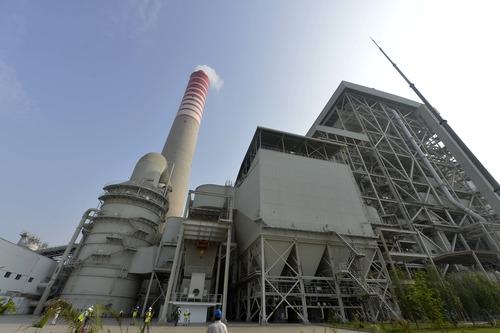The six major economic corridors usually refer to the New Eurasian Land Bridge, the China-Mongolia-Russia Economic Corridor (CMREC), the China-Pakistan Economic Corridor (CPEC), the China-Central and Western Asia Economic Corridor, the China-Indochina Peninsula Economic Corridor, the Bangladesh-China-India-Myanmar Economic Corridor (BCIMEC).
-- New Eurasian Land Bridge
The New Eurasian Land Bridge (NELB), also called the Second Eurasian Continental Bridge, is an international passageway linking the Pacific and the Atlantic.
Distinct from the Siberian Landbridge, which goes from Russia's eastern port of Vladivostok through Siberia to Moscow and onward to West European countries, this "second" bridge goes from China's coastal cities of Lianyungang and Rizhao to Holland's Rotterdam and Belgium's Antwerp.
The 10,800-km-long rail link runs through Kazakhstan, Russia, Belarus, Poland and Germany, and serves more than 30 countries and regions.
To date, several transcontinental rail routes, which showcase the potential of the Belt and Road Initiative, have entered service. These include the Chongqing-Xinjiang-Europe Railway (reaching Germany's Duisburg via Poland), the Chengdu-Xinjiang-Europe Railway (reaching Poland), and the Yiwu-Xinjiang-Europe Railway (reaching Madrid, Spain).
The construction of associated highways, power transmission lines and ports is progressing in a steady manner.
-- The China-Mongolia-Russia Economic Corridor
The idea of the China-Mongolia-Russia Economic Corridor (CMREC) was proposed by China in September 2014 during the first trilateral meeting of the heads of state of the three countries in Dushanbe, capital of Tajikistan. In 2016, the CMREC became the first multilateral cooperation plan to become part of the Belt and Road Initiative.
The CMREC has two key traffic arteries: one extends from China's Beijing-Tianjin-Hebei region to Hohhot in Inner Mongolia and on to Mongolia and Russia; the other extends from China's Dalian, Shenyang, Changchun, Harbin and Manzhouli to Russia's Chita.
Seven major areas of cooperation are envisaged: transport infrastructure and inter-connectivity; port construction, and customs and border inspection and quarantine services; industrial capacity and investment; trade; cultural and people-to-people exchanges; environmental protection; and cooperation with adjacent regions. Transport is the main focus.
-- The China-Central Asia-West Asia Economic Corridor
The China-Central Asia-West Asia Economic Corridor (CCWAEC) links China and the Arabian Peninsula. The vast region it covers generally follows the trajectory of the ancient Silk Road.
The corridor starts from China's Xinjiang region and traverses Central Asia before reaching the Gulf, the Mediterranean Sea and the Arabian Peninsula. It crosses five Central Asian countries (Kazakhstan, Kyrgyzstan, Tajikistan, Uzbekistan and Turkmenistan) and 17 countries and regions in West Asia (including Iran, Saudi Arabia and Turkey).
-- The China-Pakistan Economic Corridor
The China-Pakistan Economic Corridor (CPEC) is a trade network of highways, railways, pipelines and optical cables, and a flagship project under the Belt and Road Initiative, which are currently under construction throughout Pakistan.

The photo taken on Aug. 6, 2019 shows the Sahiwal Coal Power plant in Sahiwal, Punjab Province, Pakistan. Power plants under the China-Pakistan Economic Corridor (CPEC) have improved livelihood of Pakistanis by helping the government overcome severe electricity shortage. TO GO WITH: "Feature: CPECower plant provides clean electricity, green environment to Pakistan" (Xinhua/Ahmad Kamal)
The 3,000-km-long corridor starts from China's Kashgar and ends at Pakistan's Gwadar, and connects the Silk Road Economic Belt in the north and the 21st Century Maritime Silk Road in the south.
So far, CPEC has been partly operational as Chinese cargo is transported overland to Pakistan's Gwadar Port for onward maritime shipment to Africa and West Asia.
-- The China-Indochina Peninsula Economic Corridor
The China-Indochina Peninsula Economic Corridor (CICPEC) extends from China's Pearl River Delta westward along the Nanchong-Guang'an Expressway and the Nanning-Guangzhou High-speed Railway via Nanning and Pingxiang to Hanoi and Singapore.
This land bridge links China with the Indochina Peninsula and crosses the heart of Vietnam, Laos, Cambodia, Thailand, Myanmar and Malaysia. It is expected to boost China's cooperation with the ASEAN countries.
-- Bangladesh-China-India-Myanmar Economic Corridor
The Bangladesh-China-India-Myanmar Economic Corridor (BCIMEC) was proposed by China and India in May 2013, with the objective of linking the two huge markets of China and India and enhancing regional inter-connectivity.
In December 2013, the first meeting of the BCIMEC joint working group was held in Kunming City of southwest China's Yunnan Province, and a joint study plan was signed by all parties, leading to the establishment of a mechanism for cooperation among the four governments.




 A single purchase
A single purchase









